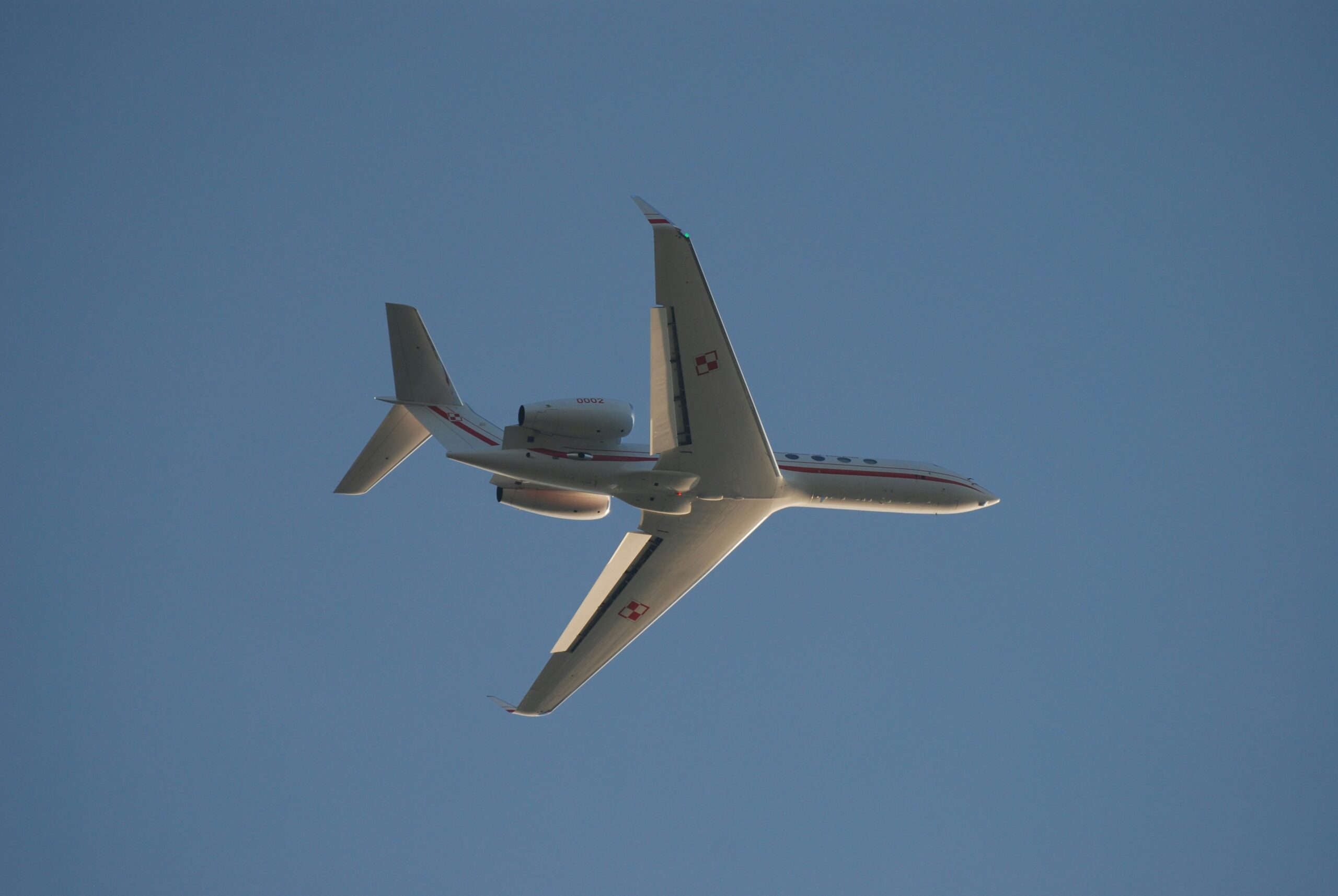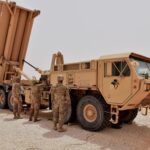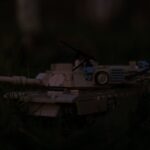The G550 rides a Gulfstream business frame, yet the cabin hides a high-power AESA radar wedged along the spine. That flat panel spins no parts, so drag stays low and parts wear slow. Controllers on board spot far-off tracks quick, leaving extra minutes for fighters or ground teams to act be-for threats grow teeth. Crew spent months mastering touchy new consoles; a few still gripe about cramped elbow room, but most agree the jump in clarity is worth the squeeze.
Regional traffic doesn’t slow, and aerial tactics twist each season. Planners viewed that swirl and pushed hard for a sensor node able to mesh with missile batteries, frigates, and allied jets. Data pipes inside the G550 lift feeds from many sources, mash them, then shoot a single clean picture to any linked unit. Command cells like the live sweep; it cuts radio chatter and trims decision lag during tense drills. Cabin design also tones down engine hum, letting operators focus longer with less ear-ring buzz.
Background
Talks on a new watch plane kicked off mid-2000s. While trusty, the Hawkeye showed its age—short legs, analog guts, heavy maintenance cycles. Study teams drew up needs: longer time on station, digital radar, small ground crew. Gulfstream’s G550 looked right. Its wings could carry the flat array without deep surgery, and civil support hubs dotted Asia Pacific already. Contracts locked in soon after, though teams wrestled with strict export clauses and late software patches.
Fitting fresh sensors called for joint sweat. Local engineers ran cable looms, overseas partners tuned radar modes. Operators faced a steep climb into AESA logic; trainers drilled new checklists that swapped paper plots for high-res glass. The first jet rolled in 2009. By 2011 crews mixed it into local and foreign drills, ironing out bugs such as errant static spikes and a stubborn fuel-temp alarm. Only when reliability scores cleared every gate did command declare the squadron fully ready.
Key Features of the G550 AEW
The G550 AEW hosts a range of features that boost its performance in demanding environments:
- Advanced Radar Array: The AESA radar can scan broad areas, track multiple targets, and adapt waveforms for better resolution.
- High-End Avionics: The cockpit includes large multi-function displays with flight data, weather information, and threat overlays.
- Enhanced Endurance: The aircraft’s efficient engines let it stay on station for extended durations, so the crew can monitor airspace for long shifts.
- Self-Defense Measures: Its defensive suite includes radar warning receivers and flare dispensers. This reduces vulnerabilities against hostile threats.
- Comprehensive Communications: Secure data links let the plane share and receive data from ships, ground forces, and allied jets.
These features give the RSAF a versatile tool for overall situational awareness. Officers who operate the system stress that the plane’s technology merges easily with existing RSAF infrastructure. The G550 AEW’s mission system is more automated compared to legacy aircraft, so the crew can manage large volumes of sensor data at once.
Operational Integration
The G550 AEW sits at the heart of Singapore’s networked air defense framework. The aircraft pushes real-time target data to fighter pilots who scramble to intercept possible threats. Ground-based missile units also receive updates about incoming objects, whether they are manned aircraft or unmanned aerial vehicles. RSAF officials say that cross-domain synergy is the main benefit. There is a seamless flow of information among squadrons, which shortens decision cycles during emergencies.
The RSAF uses Tengah Air Base to host the G550 AEW squadron. Maintenance staff there hold specialized qualifications to service the plane’s engines and radar array. Hangars have been upgraded to accommodate the aircraft’s distinctive structure. The air base’s control center coordinates flight plans and briefs air crews on mission objectives. The base has also recently received new protected combat support vehicles to enhance overall operational readiness. Military planners designed the system so that each new asset—like the G550 AEW—strengthens the entire defensive network.
Officials in Singapore emphasize that international collaboration is vital to effective early warning. They point to joint exercises, where RSAF jets train with other regional air forces. The G550 AEW’s presence ensures better command and control over large airspaces. Friendly nations appreciate the plane’s contribution because it reduces confusion when many aircraft share the skies. Participants can focus on refining tactics rather than worrying about possible collisions or miscommunications.
Strategic Importance
Singapore occupies a crucial position near maritime routes in Southeast Asia. Commercial traffic is dense, and potential threats can mix in that volume. The G550 AEW forms part of a broader strategy to maintain open skies and stable trade. Its advanced sensors can distinguish between regular flights and unusual maneuvers. Defense planners say that this precise identification is crucial in the modern age, where threats sometimes disguise themselves as civilian flights.
Many observe that this aircraft is a deterrent. It signals to adversaries that Singapore invests in robust defensive systems. The real-time detection, classification, and tracking capabilities ensure that intruders have less space to hide. Government representatives claim that the G550 AEW’s presence relieves anxiety among commercial airlines, since it keeps a close watch on congested air corridors. It also supports Singapore’s goal of forging strong defense ties. Regional allies see Singapore as a partner able to share valuable airborne intelligence.
Collaborations and Exercises
The RSAF frequently deploys the G550 AEW to multinational exercises such as Exercise Pitch Black in Australia or regional air defense drills in Southeast Asia. Participants use these events to practice large-force engagements, where the G550 AEW orchestrates aerial operations over wide areas. Commanders highlight that the plane’s extended range detects activities at far corners of the training zone. Fighter pilots appreciate the improved picture it provides, so they can navigate scenarios involving advanced adversary tactics.
Pilots from partner nations occasionally board the G550 AEW as observers. This fosters open communication and teaches different approaches to airborne surveillance. The aircraft’s design allows operators to tailor radar scans and track specific targets. For instance, if an exercise scenario simulates a high-speed incursion, the G550 AEW’s sensors adjust frequency and beam shape. International allies say that the squadron’s skill level is impressive. They see Singapore as a leader in combining advanced platforms with well-drilled crews.
Cooperation extends beyond flight missions. Maintenance teams share insights on sustainment best practices. Defense firms hold workshops about emerging technologies that could enhance the G550 AEW. Some are exploring ways to integrate artificial intelligence to automate target classification. The RSAF remains cautious in adopting untested methods, but it keeps an eye on developments that promise to improve mission outcomes.
Maintenance and Training
Maintaining an aircraft that houses so many sensors can be complex. RSAF technicians must preserve the G550’s performance and ensure that radar arrays function at peak levels. The service set up a dedicated logistics unit that supports spares management. This unit tracks components, organizes inspections, and runs diagnostics to predict system failures. Flight line crews carry out thorough pre-flight checks, scanning for anomalies that could hamper the mission.
Crew training is another central focus. The G550 AEW’s console operators study data interpretation techniques. They learn to compare inputs from different radar modes and identify suspicious patterns. Mission commanders master the art of guiding interceptors through voice communications and digital links. Instructors say the learning curve is steep. Operators must remain calm during high-pressure events, especially when multiple targets appear at once. Graduates from the program gain a deep understanding of how to coordinate with Singapore’s fighter community.
RSAF officials confirm that specialized simulators help minimize flight hours needed for training. The simulators mimic real missions, including the unique waveforms that AESA radars use. Crews can drill responses to jamming or stealth targets. Instructors program various environments, from open ocean to urban coastlines. This variety prepares operators for the region’s diverse geography. The simulator also logs performance metrics and highlights mistakes that might lead to improvement in subsequent sessions.
Potential Upgrades
Industry experts note that the G550 AEW platform can accommodate more enhancements over its lifespan. Software updates can refine radar algorithms, boosting detection rates against drones or low-observable aircraft. The plane’s defensive systems could gain improved countermeasures if new threats arise. Some propose advanced networking solutions to let the G550 AEW share data with friendly navies. That connection might streamline maritime patrols and anti-ship operations in contested waters.
Officials in Singapore acknowledge the potential for future upgrades but do not reveal specific timelines. They prefer to keep adversaries guessing about the next steps. External observers speculate that the RSAF might adopt advanced data fusion techniques, giving the G550 AEW an even clearer picture of complex battlefields. Others mention satellite connectivity to share intelligence beyond line-of-sight constraints. For now, the RSAF states that the aircraft is meeting current demands and remains flexible enough to accept improvements in the future.
Future Outlook
Analysts agree that Singapore’s G550 AEW fleet represents a powerful step in building a comprehensive air defense. It operates in tandem with fighter jets like the F-16 and the F-15SG, as well as Patriot and ASTER missile systems. This layered approach discourages unauthorized intrusions and provides a safety net for crucial maritime routes. The city-state invests in training and technology to keep the system relevant. Decision-makers see it as an essential shield against evolving regional challenges.
Technological advances keep accelerating. Officials expect next-generation radar designs to appear soon. The RSAF aims to remain ready by monitoring these developments. Commanders believe that continued cooperation with allies and international manufacturers will be vital. The G550 AEW squadron’s service life extends for many years, so the RSAF wants to adapt to changing realities. Observers predict that Singapore’s defense strategy will center on intelligence-driven operations, and the G550 AEW stands ready to fulfill that role.
Conclusion
Singapore’s G550 AEW squadron demonstrates the country’s commitment to modernizing its defenses. The aircraft surpass older systems in range and resolution, so it brings a deeper sense of security. RSAF planners confirm that the squadron’s readiness is high. They also point to the positive outcomes from exercises where the G550 AEW directed friendly forces with precise data. Many see the squadron’s success as a turning point, because it marks a new standard for Singapore’s military capabilities.
WHAT’S NEW (March 2025 Update)
The RSAF has introduced more refinements to the G550 AEW. These include new antennas for faster data transfers and software updates that refine target classification. Crews at Tengah Air Base are working with data analysts who examine radar returns. They study emerging flight profiles and make sure the G550 AEW’s sensors can detect them. Operators confirm that the system now flags suspicious maneuvers more accurately than before.
Recent multinational exercises also placed the G550 AEW in a central role. During Exercise Falcon Watch 2024, held off Singapore’s southern coast, the aircraft coordinated combined assets from multiple nations. Observers saw quicker handovers to fighter pilots, and there were fewer communications hiccups. Regional defense officials praised the G550 AEW for its ability to process dense radar pictures. Joint planning teams say that the G550 AEW’s presence pushes overall readiness higher.
Internal training methods have changed. The RSAF introduced specialized tutorials for younger operators. Some modules focus on unfamiliar threat profiles, including high-speed drones. Instructors noticed that G550 AEW crews identified and sorted these smaller objects without confusion. This achievement reassures defense planners that the squadron is staying ahead of the curve.
A maintenance shift is also underway. The RSAF is expanding its pool of technicians who handle sophisticated diagnostic tools. These tools predict component wear by reading sensor data from the engines and radar hardware. Early results suggest lower downtime, since crews can replace parts before faults occur. RSAF officials say this approach keeps the aircraft flying more often.
Upgraded communications suites help the G550 AEW share information with remote ground stations. The system reconfigures network settings on the fly, so it stays linked even if one channel fails. This makes the plane more resilient to interference. Commanders stress that information resilience is crucial in modern warfare, and the G550 AEW’s updated communications help maintain that edge.
During recent border security patrols, the G550 AEW detected unknown aircraft faster than expected. It provided a real-time feed to both RSAF command and maritime patrol vessels. Cross-service coordination improved, since everyone had the same situational picture. Navy officers in Singapore mention that these developments make joint operations smoother. They say that direct data sharing from the G550 AEW streamlines decisions at sea.
The RSAF remains cautious but optimistic. It is open to future collaborations that keep the G550 AEW relevant for coming challenges. No official announcements on new acquisitions have surfaced, yet defense analysts believe the plane may gain next-level sensor kits or further automation. For now, the updates completed by March 2025 reflect Singapore’s vision for tight integration and proactive defense measures. Operators note that each enhancement builds on the plane’s core strengths. The RSAF says these improvements are the natural evolution of a program that seeks to guard Singapore’s skies well into the future.
REFERENCE SOURCES:
- https://en.wikipedia.org/wiki/EL/W-2085
- https://www.flightglobal.com/singapore-declares-g550-aew-fully-operational/104926.article
- https://www.mindef.gov.sg/news-and-events/latest-releases/2012apr13-News-Releases-00184
- https://www.mindef.gov.sg/rsaf/about-the-rsaf/history/detail/third-generation-rsaf
- https://www.channelnewsasia.com/singapore/rsaf-exercise-pitch-black-early-warning-plane-g550-2917111



